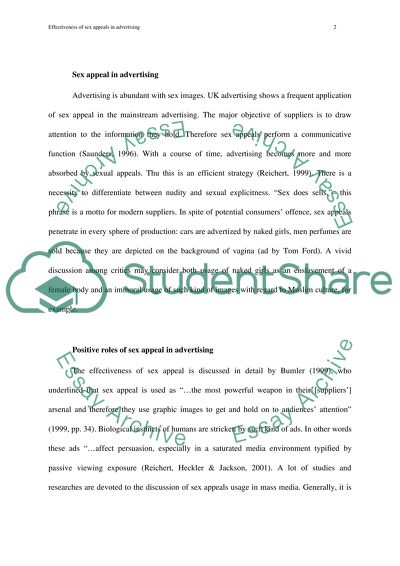Cite this document
(“To what extent the effectiveness of sex appeal in advertising may be Essay”, n.d.)
To what extent the effectiveness of sex appeal in advertising may be Essay. Retrieved from https://studentshare.org/miscellaneous/1569024-to-what-extent-the-effectiveness-of-sex-appeal-in-advertising-may-be-reduced-by-factors-like-religion-culture-morals-and-traditions
To what extent the effectiveness of sex appeal in advertising may be Essay. Retrieved from https://studentshare.org/miscellaneous/1569024-to-what-extent-the-effectiveness-of-sex-appeal-in-advertising-may-be-reduced-by-factors-like-religion-culture-morals-and-traditions
(To What Extent the Effectiveness of Sex Appeal in Advertising May Be Essay)
To What Extent the Effectiveness of Sex Appeal in Advertising May Be Essay. https://studentshare.org/miscellaneous/1569024-to-what-extent-the-effectiveness-of-sex-appeal-in-advertising-may-be-reduced-by-factors-like-religion-culture-morals-and-traditions.
To What Extent the Effectiveness of Sex Appeal in Advertising May Be Essay. https://studentshare.org/miscellaneous/1569024-to-what-extent-the-effectiveness-of-sex-appeal-in-advertising-may-be-reduced-by-factors-like-religion-culture-morals-and-traditions.
“To What Extent the Effectiveness of Sex Appeal in Advertising May Be Essay”, n.d. https://studentshare.org/miscellaneous/1569024-to-what-extent-the-effectiveness-of-sex-appeal-in-advertising-may-be-reduced-by-factors-like-religion-culture-morals-and-traditions.


